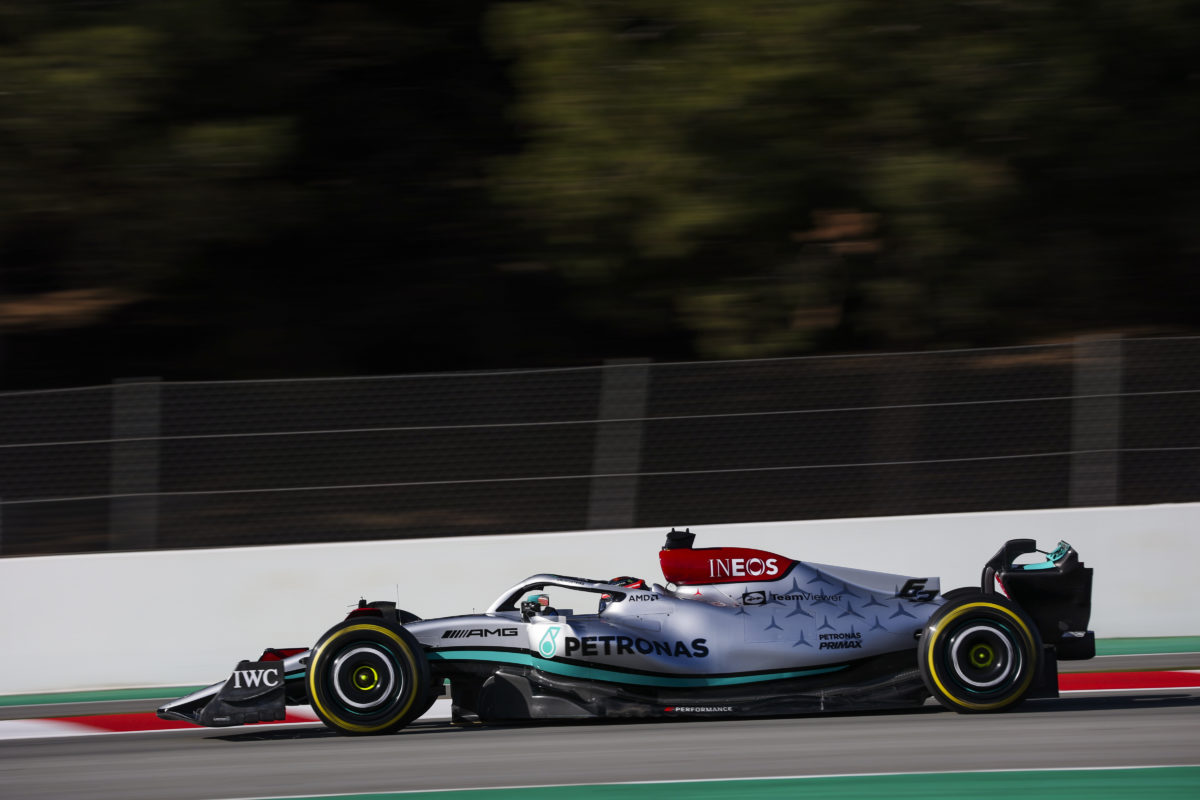

Formula 1’s new technical rules look to have at least partially allowed cars to follow more closely, but there has been another impact too.
Teams last week took part in three days of pre-season testing in Spain, the first formal outings for the 2022 spec cars.
One of the key motivators for introducing new technical rules this year was in an effort to allow cars to follow one another more closely.
That has seen F1 return to ground effect designs, which sees the bulk of the downforce generated under the floor rather than via wings and bodywork in the airstream.
With reduced turbulence created by cars, and reduced sensitivity to it, the change in philosophy translates into greater on-track action.
“The following has been improved, but the slipstream effect has been reduced quite substantially,” observed Mercedes’ George Russell.
“You obviously need that delta in the straight to be able to overtake, as you can only really overtake at the end of the straight, into the corner.
“I think we can follow closer, but from what we’ve seen, the slipstream effect is definitely less effective.”
Russell and McLaren’s Lando Norris had a brief spell running together on track, offering the duo somewhat more of an insight into how the cars will interact on track.
“I think me and George had a perfect demonstration of it,” Norris noted.
“I think definitely the following parts in the corners is an improvement. How much exactly, it’s hard to know because you’re on different fuel levels, and tyres, and stuff.
“And maybe when there’s two, three, four, five, six cars ahead it can be quite different again.
“But with all of this obviously comes the deficit of a slipstream effect, and how much that’s going to be helping us.
“So we can follow closer but then the slipstream is worse, so there’s a positive and a negative from it.
“I don’t know which one’s the bigger effect at the minute, so we’ll have to wait and see until the first race.”
Despite the new regulations, the Drag Reduction System has been retained for the coming season which would go some way to alleviating the changes to the slipstream effect.
Teams are also dealing with the effects of ‘porpoising’, a phenomenon directly related to the use of ground effects which sees the airflow under the car stall, prompting the car to rise before the airflow is restored, at which point it hunkers down once more.
To resolve that issue, teams resorted to raising the ride height of their cars, though that is more a workaround than an ongoing solution as it takes the car out of its ultimate performance window.
A second three-day test, this time in Bahrain, is set to get underway on March 10.
F1 teams will then remain at the venue which also hosts the opening round of the 2022 season from March 18-20.





















Discussion about this post